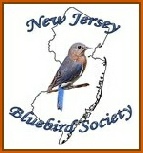Design & Webmaster: Gary Pilling, Design Program: Serif WebPlus x8, Host: iPage


SETTING UP A BLUEBIRD TRAIL
*The phrase “bluebird trail” can refer to one box or many boxes.
• Habitat is the key factor to consider when setting up a bluebird trail. Open rural country with scattered trees and low or sparse ground cover is best. Suitable habitat should include a fence line, wires, tree branches, or other sites where bluebirds can perch to search for food. If bluebirds do not like the habitat, they probably will not use your nestboxes.
• Open pastureland, parks away from human traffic, and mowed areas such as cemeteries and golf courses are all good locations for a bluebird trail.
• Avoid areas of heavy pesticide use.
• Mount nestboxes at least 50–200 feet away from brushy and heavily wooded areas—this is House Wren habitat, a species that may destroy bluebird eggs and/or compete with bluebirds for nestboxes.
• Avoid areas where the House Sparrow is abundant. House Sparrows are vicious competitors.
• For convenience, mount nestboxes so the entrance hole is approximately five feet (eye level) above the ground.
• Face the nestbox away from prevailing winds, and if possible, face it toward a tree or shrub that is within 100 feet of the box to provide a landing spot for the young bluebirds when they first leave the box.
• Nesting density for bluebirds is dependent on many factors. Contact your local bluebird affiliate organization to find out what they recommend. In many cases, bluebirds have been observed nesting closer than the distances recommended. However, it is better to start a bluebird trail with boxes placed too far apart than too close together.
Eastern Bluebirds — 100 yards minimum — 125 to 150 yards apart may be better
Read Articles Published by NJBBS members on this topic.
John Layton: If You Build It They Will Adapt
Kenneth H. Glaspey: Bluebird Habitat Selection in a Rural Setting
Box Location